[full_width]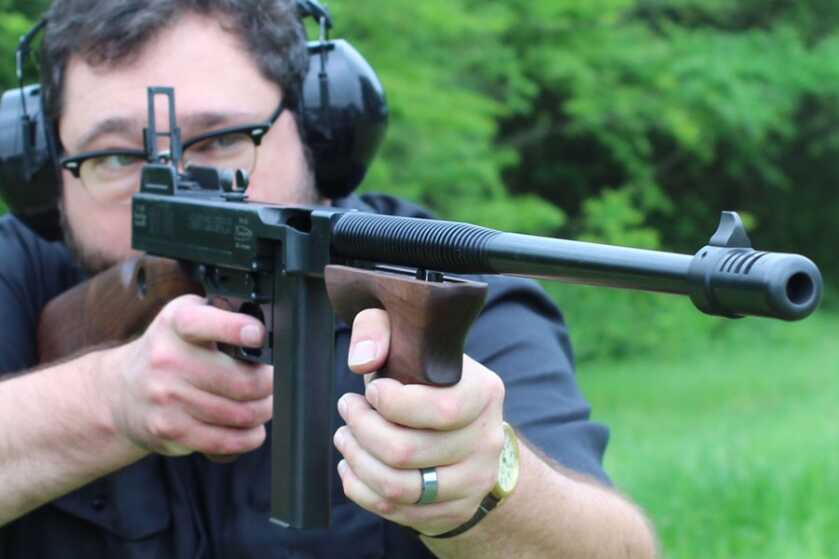 [/full_width]
[/full_width]
Editor’s note: We’ve been swimming in all-things-Thompson for a few weeks now, all in anticipation of a big giveaway from Auto-Ordnance which will happen Friday, May 6th.
As I’m putting the finishing touches on this piece, I thought I’d share my favorite piece of Thompson lore. Devotees might know of my love for seemingly disparate philosophical concepts. The first is the cinematic work of the Cohen brothers. The second is the concept of the simulacrum: an image without the substance or qualities of the original. Stay with me here.
There’s a scene in Miller’s Crossing, a Cohen brothers film, in which Albert Finney’s mob-boss character, Leo, takes out some rivals with a Thompson. He’s got one drum mag on the rifle, and he’s running it all-out. IMFDB cites the pundits at IMDB, who place estimates for shots fired in the absurd range: “around 524 shots are fired from the 100-round drum in the Thompson: a 5-second burst from the gangster (28 shots), then subsequent 20 second bursts from Leo after taking it, each about 233 shots each.”
[full_width]
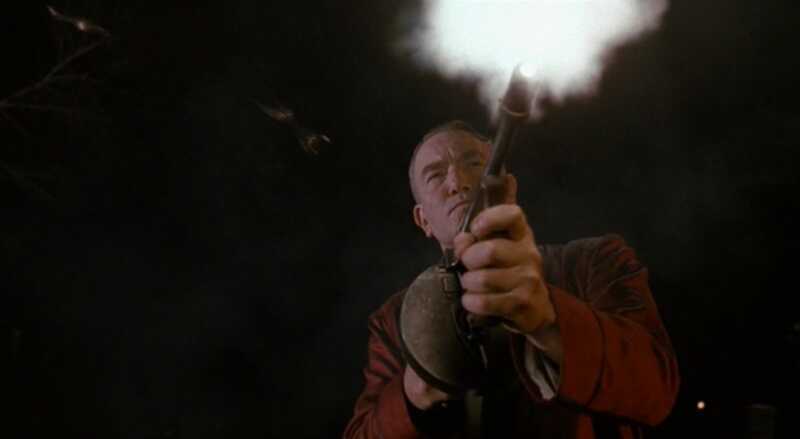
“Turns out the old man is still an artist with the Thompson.”
[/full_width]
And that’s where the simulacrum comes in. 524 rounds from a 100 drum mag. This is the very reason why politicians have placed so many ludicrous restrictions on guns. It isn’t what they actually do that’s the problem. It is what we believe they do.
The scene from Miller’s Crossing is embedded at the bottom. Now, onto the Thompson.
The Thompson Submachine Gun
Buy a Thompson GunsAmerica: https://www.gunsamerica.com/Search.aspx?T=thompson%201927a1
Enter the contest: https://www.gunsamerica.com/blog/win-a-thompson-and-a-1911-gunsamerica-giveaway/
Auto-Ordnance is celebrating the 100th anniversary of the Thompson. As part of this celebration, A-O is making 1,500 matched pairs–a 1927A1 Thompson and an A-O 1911A1. They’ve sent us a pair to review and, when we wrap up this project, we’ll be giving the set away to one lucky winner. Be sure to enter.
The Thompson Submachine Gun is arguably the most iconic 20th Century American firearm. From rum running gangsters leaving a “message” with a Chicago Typewriter to a Marine on the beach at Iwo Jima laying down fire with his Tommy Gun, the Thompson is inextricable from American history and culture.
And, in a world of really ugly guns, the Thompson just looks cool. That big drum magazine and forward pistol grip. Even in its more svelte WWII version, there is just a sexiness to the Thompson. Hollywood latched on to the cool factor of the Thompson and made it even more iconic and put it in the hands of glamorized gangsters and war heroes. But the Thompson had more humble beginnings.
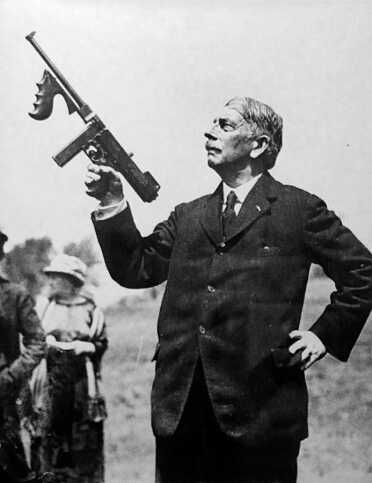
John Thompson holding a Thompson. I imagine he’s saying something like, “Prithee, witness yon bird in the sky? I shall smite it, forthwith.” That’s how they talked back then.
General Thompson
John T. Thompson was born in 1860 in Newport, Kentucky. He graduated from West Point in 1882 and was originally assigned to the 2nd Artillery. In 1890 he transferred to the Ordnance Department where the rest of his military career would take place. By the time the Spanish-American War started in 1898, Thompson was a Lieutenant Colonel and in charge of getting arms and ammunition to Cuba for the war effort. It was during the war that he took an interest in automatic weapons, even setting up a 15 gun Gatlin Gun unit that worked effectively at the Battle of San Juan Hill.
After the war, Thompson was placed in charge of small arms for the Ordnance Department. It was under his tutelage that the 1903 Springfield was created, tested and adopted. He was also heavily involved with the trials for the pistols that became the 1911. It was actually under Thompson that some of the more gruesome trails were held to test the effectiveness of different calibers. Live cows and dead human bodies were shot to help determine the terminal ballistics of various calibers. Yes, they tested on live animals to see how many rounds and how long it took them to expire. From the results, they arrived at the .45 bullet. It was under these guidelines that John M. Browning created the .45 ACP for use in what evolved into the 1911.
WWI broke out in Europe in 1914 and John Thompson retired from the Army to take a job with Remington to supply small arms to Allies. (Remember that the US was still being isolationist and stayed out of the war until 1917) Under Thompson’s guidance, Remington built its Eddystone Plant in Pennsylvania and started manufacturing 1914 Pattern Enfield and Mosin-Nagant rifles for the British and Russians respectively.
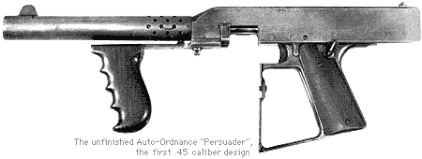
Early prototype of what was to become the Thompson. This version was called the Persuader. A later version was named the Annihilator.
Trench Broom
It didn’t take long for the war in Europe to become locked in the stalemate of trench warfare. John Thompson started to think again of automatic weapons and how they could help the Allied cause in this new type of warfare. He is the one that came up with the idea of the “Trench Broom” as a smaller, one-man gun that could be used to “sweep” trenches. Thompson started the Auto-Ordnance Company with the goal of building his broom.
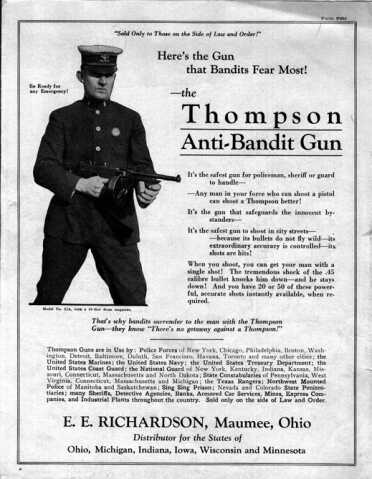
Only sold to those one the right side of the law. Or so the tag line read.
The basic design of a delayed blow back action based on the Blish Principle of Metallic Adhesion was in the works when the US entered WWI. And that was the key to Thompson’s new design, but the gun we now know as the Thompson would again be delayed. John Thompson answered the call of his country and rejoined the Army as a Brigadier General in 1917 and was placed in charge of all small arms production and procurement for the war effort. Thompson once again retired from the Army after the WWI ended and returned to Auto-Ordnance to bring about his Tommy Gun.
Gangsters and the 1934 NFA
When work started back up on the new machine gun, it was soon discovered that the action was not strong enough for use of a full sized rifle cartridge. The idea soon changed to using a pistol cartridge, namely the .45 ACP. Thompson was of course familiar with this chambering from his work on the 1911 trials. Moving to the shorter round allowed for the gun to be smaller. This led to the Thompson being the first “Sub-Machine Gun.” But with the end of WWI there wasn’t a military need for a Trench Broom and very few countries were buying arms at this time. Thompson turned to Police and Civilian sales.
Some police forces and prison systems did purchase the Thompson. But it was when they were offered on the civilian market that the machine gun gained notoriety (and not all of it good). When the gun was released in 1921, you could go to the local hardware story and order one. No paper work, tax stamp or anything. If you had a little over $200 and wanted to own a Thompson, it was just that easy.
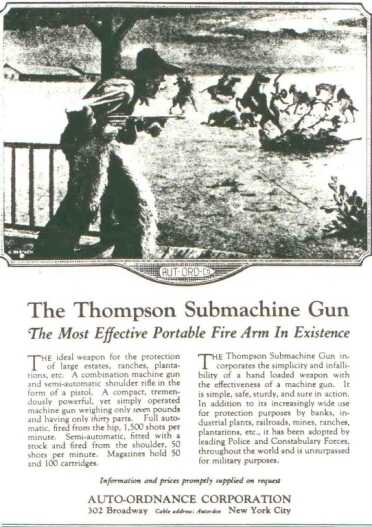
Nothing like protecting your cattle from rustlers with a submachine gun.
Soon these gun ended up in the hands of the prohibition era gangsters. John Dillinger, George “Machine Gun” Kelly (you can guess where the nickname came from), and Al Capone were all known to use the Thompson on the wrong side of law and order. They earned the nickname Chicago Typewriter for their use by the notorious Chicagoland gangs, and two Tommy guns were involved in the St. Valentine’s Day Massacre in 1929.
Politicians existed then, too. Public outcry after shootings like the St. Valentine’s Day Massacre spurred them to action, and the National Firearms Act of 1934 was passed. This is the first instance of the Tax Stamp for automatic firearms, SBRs, SBSs and suppressors. The tax was the same $200 then as it is now. Of course $200 during the depression was a lot more money than $200 today. Today, with the current rate of the dollar, $200=$3,554.21.
So that Thompson, which was originally priced around $200, would, today, cost somewhere in the neighborhood of $7k. Bye-bye civilian sales.
In the Army Now
John Thompson always hoped that his namesake would be adopted by the US Armed Forces. Unfortunately he passed in 1940 before that took place. With the lead up and the start of WWII the US had a need for a domestically produced submachine gun and the Auto-Ordnance Thompson was the one.
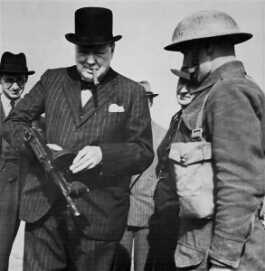
It doesn’t get more iconic than Winston Churchill holding a Thompson and smoking a cigar.
Legacy
I said it above and I will say it again, the Thompson Submachine Gun is arguably the most iconic firearm of the 20th Century. So much so that Auto-Ordnance is still around and making semi-automatic versions with rifle length barrels. The company has been through numerous hands since the end of WWII.
One great story involves the Numerich Arms Corporation who bought the Auto-Ordnance Company, toolings and spare parts in the early 1950’s. There hadn’t been a new Thompson built since the close of WWII. Numerich thought it was buying an old brand name and the parts to sell to owners of the originals. But when they took possession of the parts they discovered over 80 complete and ready to go submachine guns. That would have been a fun box to open, unless you have just bought 80+ unregistered NFA guns which is exactly what Numerich had on his hands. Everything worked out in the end and no one went to jail.
Buy a Thompson GunsAmerica: https://www.gunsamerica.com/Search.aspx?T=thompson%201927a1
Read more at Auto-Ordnance: https://www.auto-ordnance.com/Thompson_100ANN.asp
Enter the contest: https://www.gunsamerica.com/blog/win-a-thompson-and-a-1911-gunsamerica-giveaway/
[full_width]
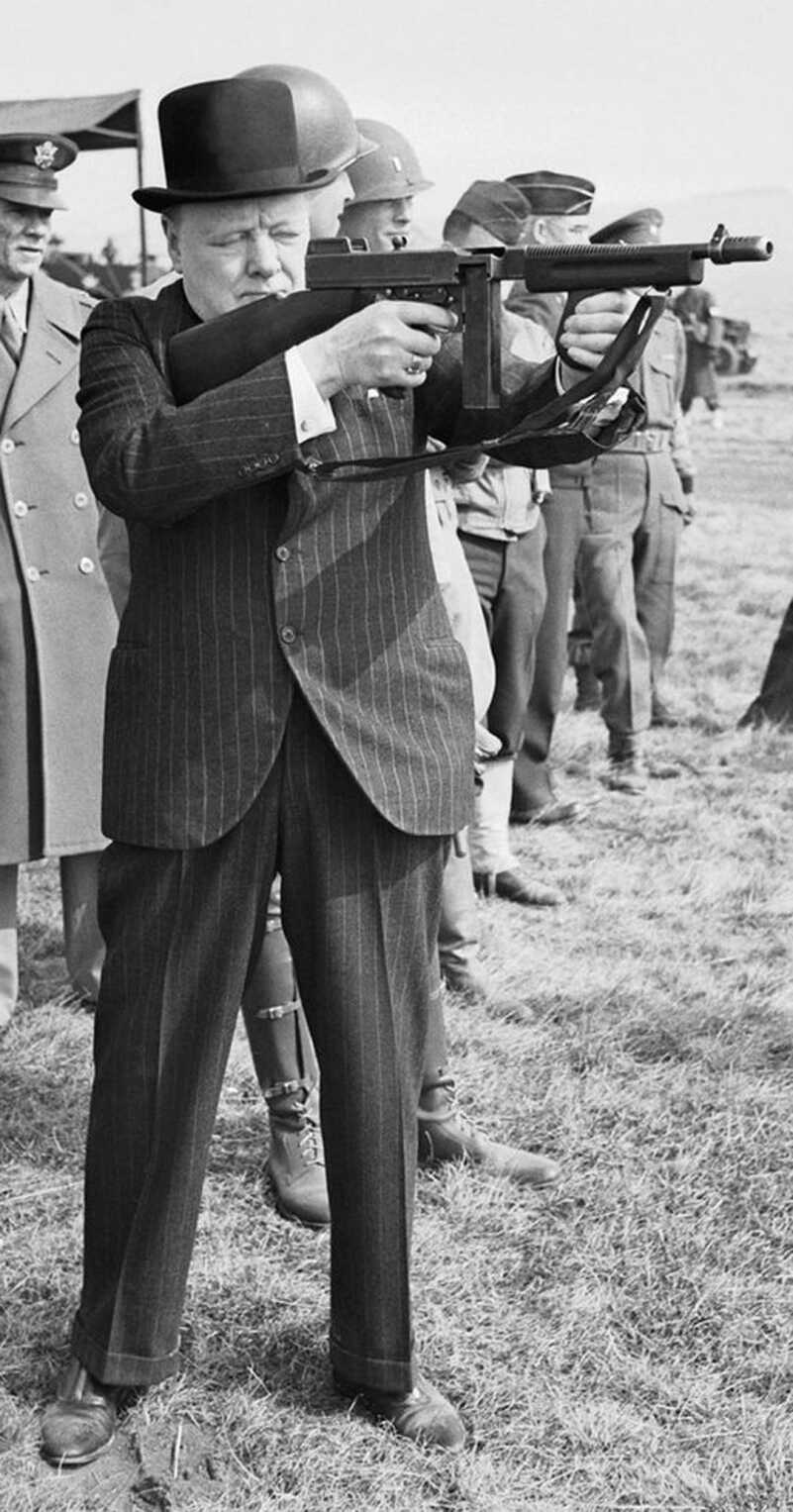
Open your eyes, Winnie!
[/full_width]
[full_width]
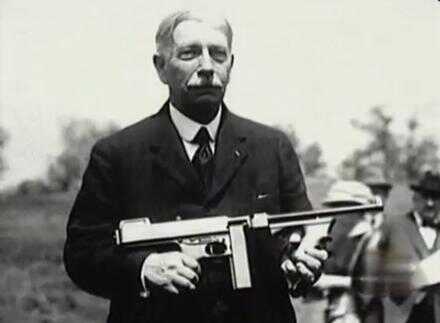
General John Thompson with his personal approach to the .45 ACP. Stock, shmock. Who needs a stock? This gun runs on rails.
[/full_width]
[full_width]
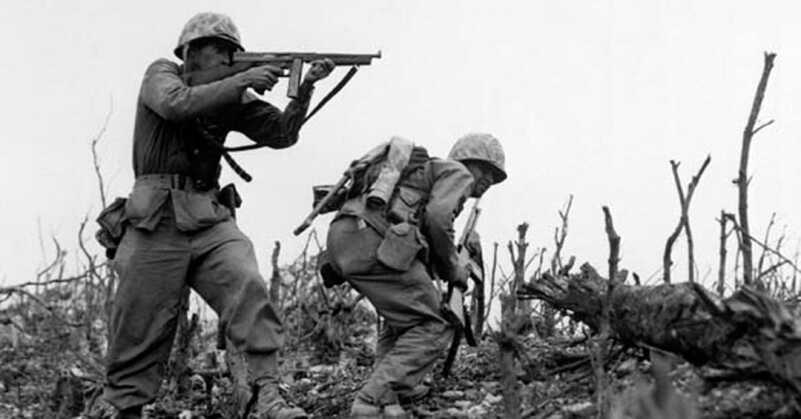
“A Marine of the 1st Marine Division draws a bead on a Japanese sniper with his tommy-gun as his companion ducks for cover. The division is working to take Wana Ridge before the town of Shuri. Okinawa, 1945. S.Sgt. Walter F. Kleine. (Marine Corps)
Exact Date Shot Unknown
NARA FILE #: 127-N-123170
WAR & CONFLICT BOOK #: 1228″
[/full_width]
[full_width]
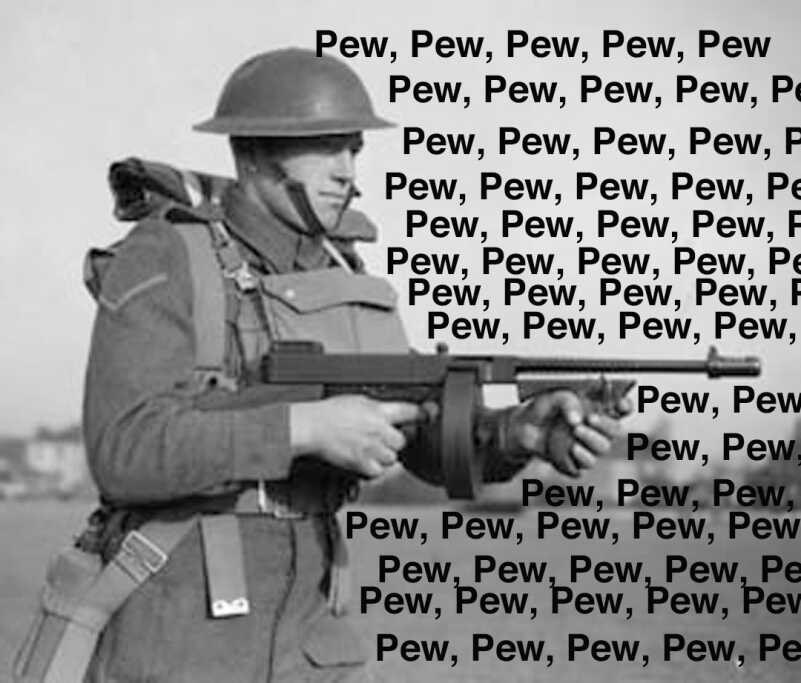
When compared to the picture above, this one looks less intense. So I wrote pew, pew, pew all over it. Maybe that’s sacrilege. If so, I apologize.
[/full_width]

I joined B 229 Avn unit in April 67 and was promply issued a S&W 38, a scarey thought defending myself with that Pea shooter. A few weeks later I horse traded for a M2 carbine which wasn’t much better than the 38. One day I pulled a group of LRRPs out of the bush one of which had a Thompson, sans stock and a belt pouch with 5 loaded mags. He also had his M16, pack, and a 1911, the poor guy was beat from lugging all that weight. I offered him the M2 for the Thompson which he gladly accepted. That Thompson was by my side every where I flew and came in real handy during TET at Hue. The only improvement I made was adding a good squeeze of Semi Fluid (teflon grease) to a full clip. It was messy but boy did it help emptying a clip fast without a single jam. I had to give that one up but the new one is sure better looking.
I came across this article in the latest GunsAmerica Digest and I thought I would add my comments.while serving two tours in Vietnam 1967 thru 1969, in the central highlands I was given the opportunity to take over the supply room and be in charge of ordnance and explosives and other sundries. Working with a montagnard company they would get all the older weapons to use for defense before the RVN soldiers would, thus I would train and show them the use of such weapons as the M1 Garand and the M1A1 30 cal rifle, shotguns, M1911’s, Bazokas, all kinds of goodies. The one thing I treasured was the use of a Thompson sub-machine gun before turning it over to my Montagnard Sgt conterpart. Both the drum type and stick type. I loved them as I felt like James Cagney and Edward G Robinson.These Highland people respected the US troops and the equipment we gave them. Now they a fond memories that I recall. Thank you for allowing my ramblings.
Sgt Hugo Ciaffaglione U.S. Army Pr’line Mountain 362nd signal company RVN
The Thompson Submachine gun was a good close range weapon. In my studies I have found it was not very effective beyond 70 yards. I heard the troops in World War II only used the 20 and 30 round magazines because the ammo in the drum magazine rattled when it was carried. I also heard the drum magazine was less reliable and caused more jams.
By today’s standards the Thompson is very heavy. In my choice of a submachine gun today I would go with the .45 Auto or .40 Smith & Wesson Heckler & Koch UMP. Lighter and improved technology over the old Thompson .45 Auto.
Great scene. All that’s missing is Albert Finney lighting his cigar off of the smoking barrel of his Chicago Typewriter!